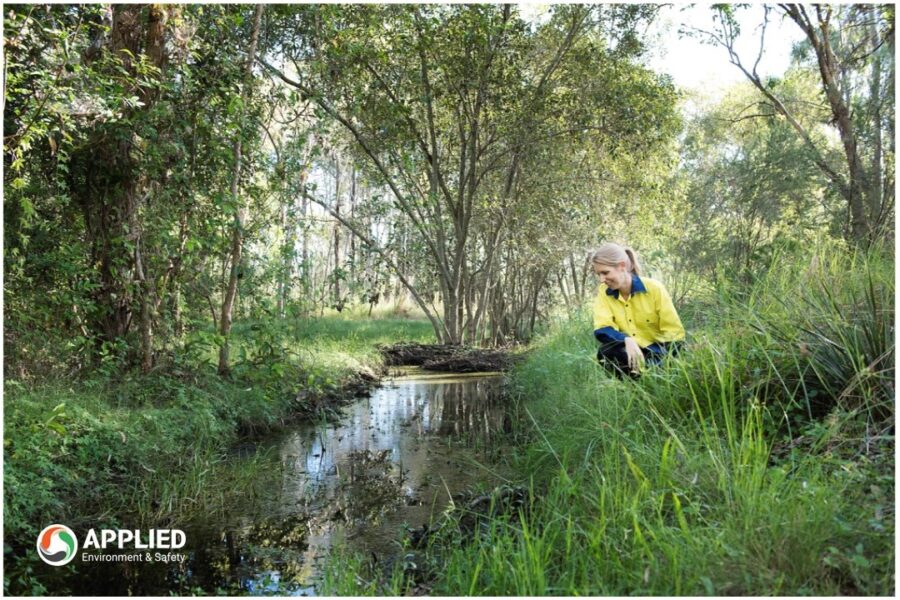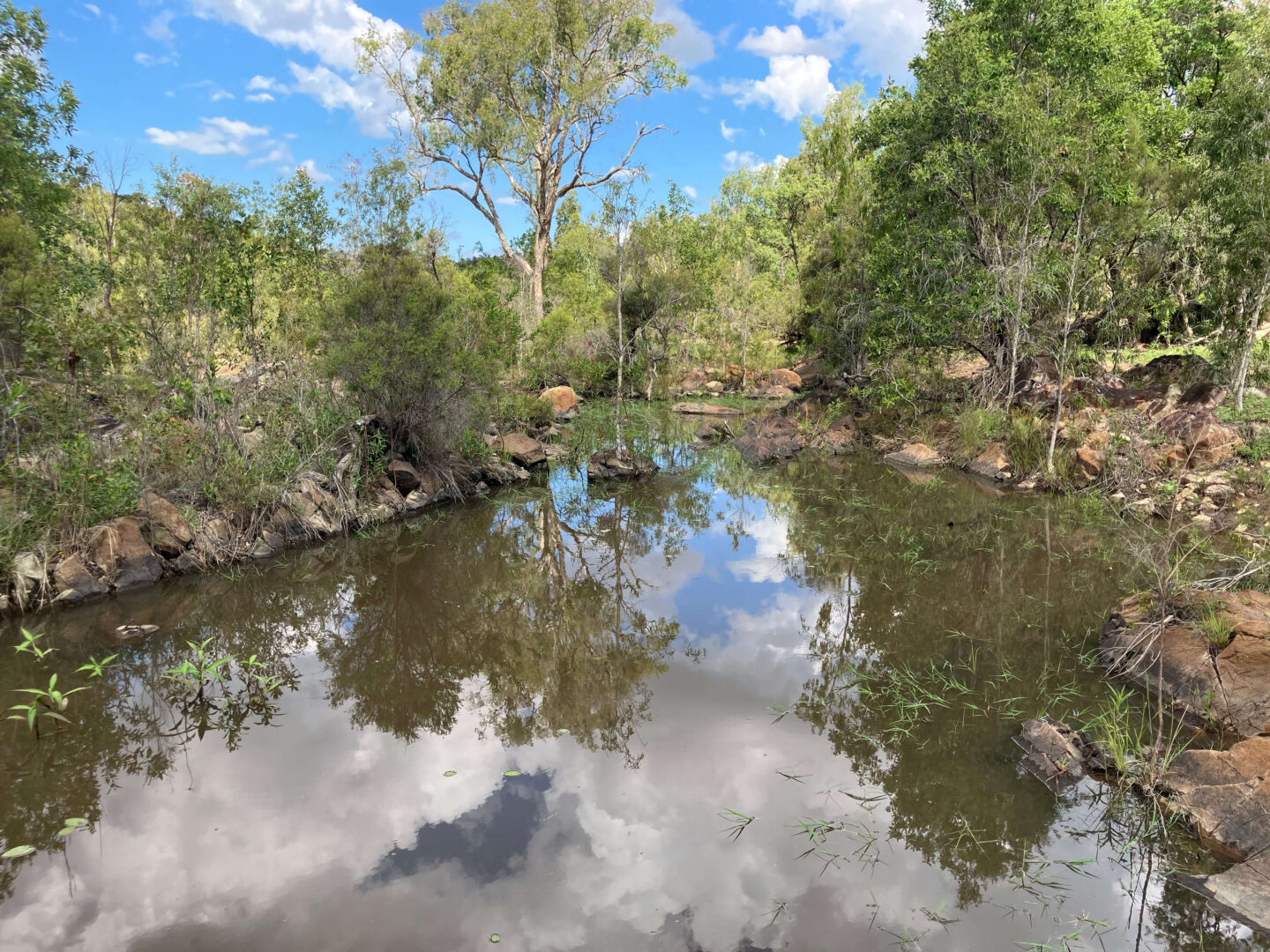
The Complete Guide to Erosion and Sediment Control in Australia (2025 Update)
Protecting Soil, Water and Compliance on Every Site
Erosion and sediment control (ESC) is essential for protecting Australia’s creeks, rivers and coastal waters from long-term degradation. When soil is disturbed during land clearing, construction or infrastructure works, rainfall can quickly turn exposed ground into a source of sediment-laden runoff, polluting waterways and damaging ecosystems.
At Applied Environment & Safety (AES), we help clients plan, implement and maintain practical erosion and sediment controls that ensure site stability and environmental compliance. This guide explains what ESC is, why it matters, and how to apply best-practice measures across your project to mitigate environmental harm.
What Is Erosion and Sediment Control?
Erosion is the detachment and movement of soil particles by water, wind or human activity. Sedimentation is when those particles settle in new locations, often in creeks, rivers, wetlands or estuaries.
While erosion and sedimentation are natural processes, human activities accelerate them dramatically. Exposed soil becomes highly mobile during rainfall events; without effective controls, sediment can wash into nearby waterways.
Why It Matters
- Site stability: Erosion can undermine infrastructure, access roads and stockpiles, increasing safety risks and maintenance costs.
- Environmental impact: Sediment reduces water quality, smothers aquatic habitats and disrupts ecosystems.
- Reputational risk: Non-compliance can lead to enforcement action and reputational damage.

Why Erosion and Sediment Control Is Critical
1 – Maintaining Site Stability and Reducing Risk
Effective erosion control maintains the physical integrity of your site. Stabilising exposed soils with vegetation, mulch or geotextiles helps prevent washouts and keeps roads, stockpiles and access tracks functional.
2 – Protecting Waterways and Ecosystems
ESC safeguards Australia’s waterways, wetlands and coastal environments. Runoff from disturbed soils contributes to turbidity, nutrient loading and habitat degradation – with downstream consequences that extend far beyond the work zone.
3 – Meeting Legal and Regulatory Obligations
Erosion and sediment control is required under the federal and state planning and approval frameworks. Demonstrating due diligence through well-documented ESC plans supports compliance and audit readiness.
Planning and Implementing Erosion and Sediment Controls
1- Understand Site-Specific Conditions
Each site is unique. Factors such as soil type, slope, rainfall intensity and proximity to sensitive receptors determine your ESC strategy.
- Soil: Fine silts and clays travel long distances; sandy soils erode rapidly but settle quickly.
- Slope: Steeper gradients accelerate water flow and erosion potential.
- Rainfall: Frequent or intense events test the resilience of controls.
- Catchment sensitivity: Runoff can travel hundreds of kilometres, impacting downstream ecosystems such as the Great Barrier Reef.
2 – Develop an Erosion and Sediment Control Plan (ESCP)
An ESCP outlines how your site will manage erosion and sediment risk. It’s a site-specific document reflecting actual conditions, construction methods and environmental obligations.
A strong ESCP should include:
- Site layout and drainage flow paths
- Identified erosion and sediment risks
- Temporary and permanent control measures
- Inspection and maintenance schedules
- Reporting and documentation protocols
Some projects require certification by a Certified Professional in Erosion and Sediment Control (CPESC) to meet regulatory standards.
Types of Erosion and Sediment Controls
Erosion Controls
Prevent soil detachment and stabilise exposed areas:
- Vegetation and grass cover
- Erosion-control matting or geotextiles
- Mulch or compost blankets
- Diversion drains and bunds
Sediment Controls
Trap soil once it’s mobilised:
- Silt fences and sediment barriers
- Sediment basins and ponds
- Rock check dams and coir logs
- Stabilised site entries
Monitoring, Maintenance and Reporting
Even the best-designed system fails without consistent upkeep.
- Inspect controls regularly, especially before and after rainfall.
- Repair damage immediately – small rills can become gullies within hours.
- Maintain a logbook documenting inspections and corrective actions for audits.
Routine monitoring keeps controls effective, reduces environmental risk and provides a defensible record of compliance.

Practical On-Site Tips – The AES Top Ten
AES developed “On-Site Erosion and Sediment Control: Top Ten Tips to Keep Soil and Water in Check.” Here’s a preview:
- Watch water flow – redirect and slow runoff early.
- Protect vegetation – keep grassed areas intact.
- Keep clean water out – divert around disturbed zones.
- Direct drainage correctly – stabilise channels and slopes.
- Slow water down – use check dams, coir logs, mulch bunds.
- Act fast on erosion – fix issues immediately.
- Break up large areas – create smaller catchments.
- Stick to the plan – match controls to your ESCP.
- Install controls properly – avoid gaps and bypass points.
- Maintain regularly – inspect before and after rainfall.
Download the full guide: [On-Site Erosion and Sediment Control: Top Ten Tips to Keep Soil and Water in Check]
Partner With Applied Environment & Safety
AES supports clients across Australia with:
- Certified Erosion and Sediment Control Plans (ESCPs)
- Environmental Management Plans (EMPs)
- Compliance inspections and field training
Whether you’re meeting approval conditions or managing high-risk works, AES helps you maintain compliance and protect the environment – without slowing progress.
Contact us today to discuss your site’s erosion and sediment control needs or to request a tailored ESCP.
